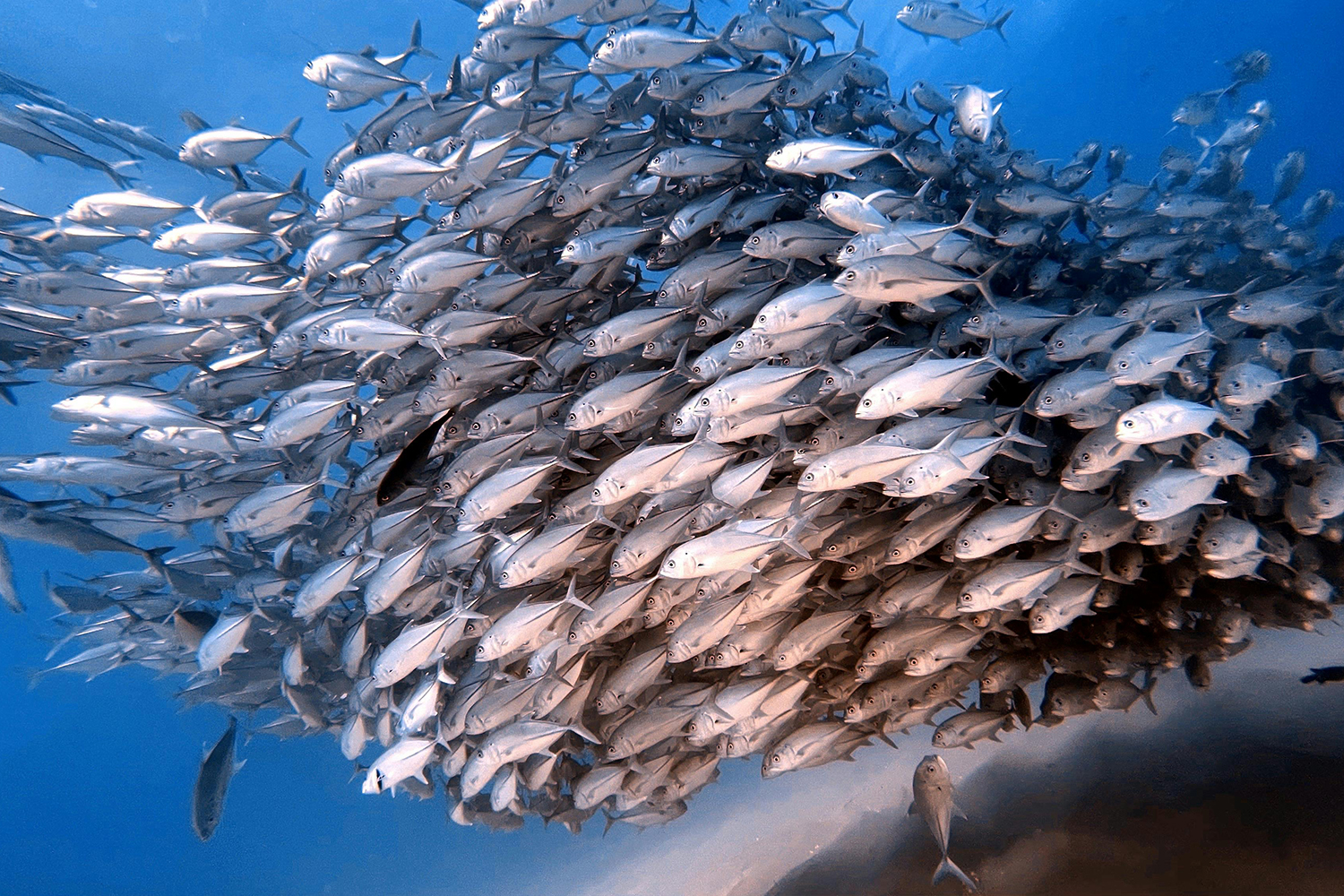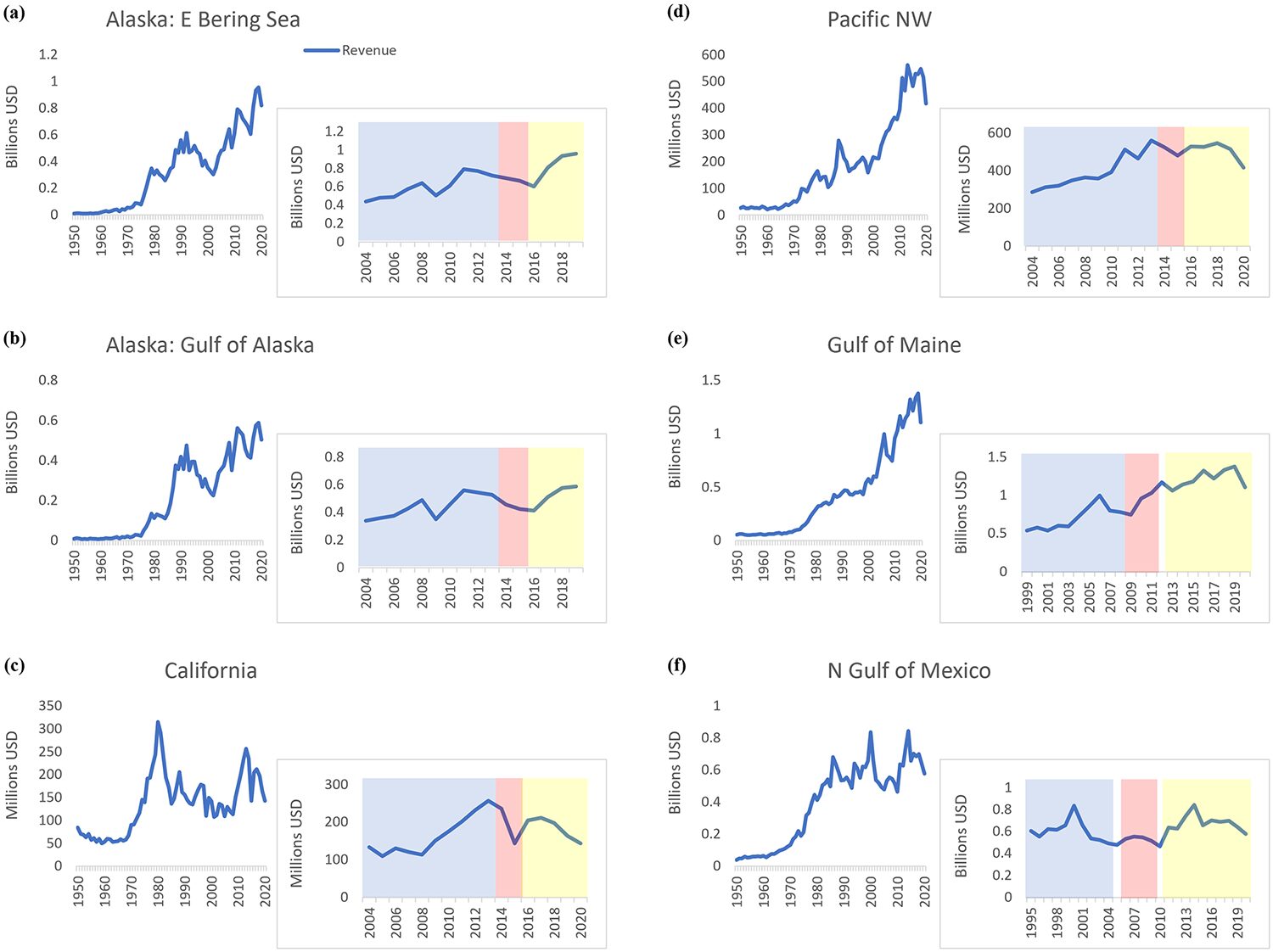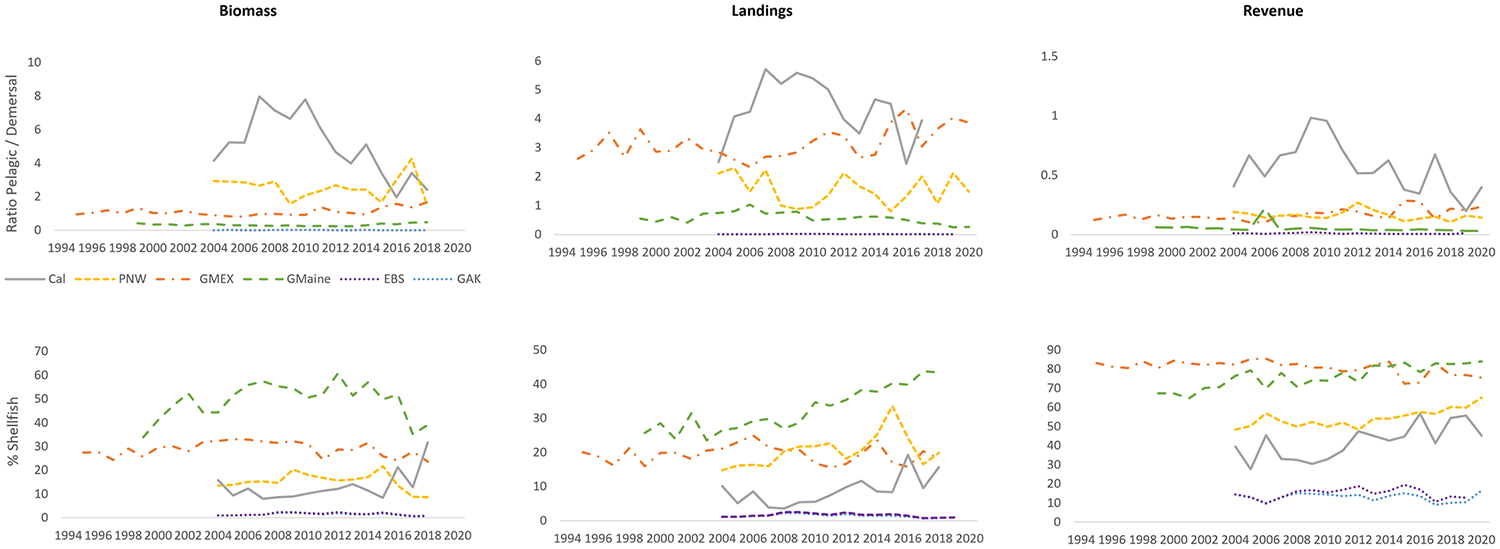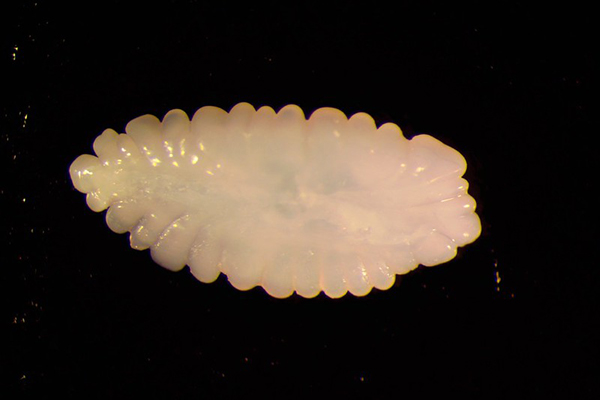The impacts of extreme events on fisheries biomass, harvest, economic performance are yet to be examined as a system

Marine ecosystems and their living marine resources (LMRs) continue to respond to the effects of global change, with environmental factors affecting these coupled social-ecological systems. Extreme events such as high category hurricanes, harmful algal blooms, marine heatwaves, large-scale hypoxia and anthropogenic events such as oil and chemical spills affect marine ecosystems. The frequency and intensity of such extreme events is expected to increase over the coming decades. Yet climate change research tends to explore persistent and chronic effects on ocean ecosystems, or focus on increases in average temperature, but not necessarily significant, acute and intense perturbations like these extreme events.
We need both to truly understand the short- and long-term response and resilience of marine ecosystems to these extreme events. Understanding whether ecosystems exhibit hysteresis or shift to alternate states is crucial as both long-term and extreme event phenomena continue to increase in their impacts on marine ecosystems. Many examples document regime shifts in components of marine ecosystems, but do not necessarily examine them over multi-decadal timeframes, nor do they comprehensively cover the key facets of the entire socio-ecological system.
Previous work has examined the foundational limits that primary production sets on fisheries ecosystems. However, the impacts of extreme events on biomass, harvest, and revenue have not been evaluated as a fully coupled economic-ecological system or across multiple socioecological systems. Truly ascertaining the impact of extreme events necessitates an examination of any associated or resulting economic impacts to the marine ecosystem. How extreme events impact LMR dynamics, and their associated economics in toto is not always clear, nor are the response times, duration, or any potential recovery from these events well known.
This article – summarized from the original publication (Marshak, A.R. and J.S. Link. 2024. Responses of fisheries ecosystems to marine heatwaves and other extreme events. PLoS ONE 19(12): e0315224) – examined responses in fisheries biomass (i.e., biomass of fishery and ecosystem component species), landings, and revenue to extreme events over time.
Study setup
This study reviewed the multi-scale effects of several eastern Pacific (eastern Bering Sea, Gulf of Alaska, California, Pacific NW) and western Atlantic (Gulf of Maine, Gulf of Mexico) ecosystems relative to marine heatwaves and regional warming, a high-category hurricane, and a major oil spill. Authors examined these responses at the ecosystem level (i.e., total system trends), at the aggregate group level, at the community/family level, and at the species levels to detect any significant changes in value or composition over time, what the response times were, and whether these variables were resilient to the impacts or shifted to new conditions.
The data underlying the results presented in the study are available from The Sea Around Us Database and the National Oceanic and Atmospheric Administration’s National Marine Fisheries Service.
For detailed information on the study design, and data collection and analyses, refer to the original publication.
Tool aims to predict effects of marine heatwaves, improve fisheries management
Results and discussion
There were clear responses to extreme events and distinct warming periods that were detectable in the marine ecosystems that we examined in terms of differences for biomass, landings, and revenue among time periods. They were observed across multiple facets of these socio-ecological systems. The responses varied, but that we were readily able to detect these responses in association with extreme events is not trivial.
Higher levels of the biological hierarchy in general tended to be more stable than lower levels, particularly when compared to the species level. This pattern varied across ecosystems, but generally the increasing number of significant responses as one moves down the biological hierarchy was commonly observed, consistent with what one would similarly expect from hierarchy theory. Greater stability at the system-level generally occurred for all three response variables, and demonstrates the stability expected at higher levels of aggregation. Although additional compounding and confounding factors may also influence these ecosystem responses, the findings in this study generally confirm the value of understanding emergent outcomes at multiple scales of hierarchy.

The most pronounced multi-level responses occurred in the California ecosystem, for which significant decreases in biomass and landings were observed post-event at the system level and for specific species and species complexes. These decreases appear to be related to the greater pelagic composition of this system, including the importance of squid, sardine, and anchovy that are responsive to climatic changes and more sensitive to thermal dynamics occurring in the water column.
Similar decreases in herrings and other pelagic species were observed in Gulf of Alaska and eastern Bering Sea biomass post-heatwave, as observed in additional studies of Alaska in which forage fish became scarce in response to regional warming. Despite similar responses, it is possible that changes in herring abundance in these systems may have been driven by one or more other forcing factors. However, collectively it does appear that those ecosystems with a higher proportion of pelagic biomass tend to exhibit stronger and more widespread responses to extreme temperature events. Observed redistributions in U.S. pelagic fishing fleets following marine heatwaves appear to support this observation.

Studies have postulated that proactive management efforts helping to mitigate effects of warming-associated early lobster migrations on crustacean fisheries, and differential vulnerability of bivalve fisheries and their revenue to marine heatwave effects, may contribute to this observed resilience. Being able to detect changes at higher hierarchical levels is quite valuable for many reasons, with the main one identifying a systemic response much faster than conducting a post-hoc meta-analysis of the component taxa.
Some ecosystems generally exhibited a return to pre-event conditions, implying resilience to these extreme events. This pattern was detected by contrasting the pre- and post- event conditions, especially in the higher biological hierarchical levels. This trend occurred across all three of the main response variables, but especially for biomass. The return to pre-event conditions was most prominent in the Gulf of Alaska, followed by the Gulf of Mexico and Gulf of Maine. Inferring that these socio-ecological systems have some degree of resilience is a positive observation for the stability and persistence of key components of marine ecosystems generally, particularly as they are projected to experience increased frequencies of extreme events.
Resilience at the system level may not necessarily transfer to particular species or groups of species with ecological or economic importance, such as Alaskan snow crab or Pacific cod, whose biomass and landings remain at lower levels post-heatwave. Additionally, factors from climate change, species physiology, fishing practices, ecological interactions, among other considerations within a given system, may influence the level of resilience. But this level of systemic or higher aggregate group level stability implies opportunities for fisheries diversification. Conversely, when even higher hierarchical levels or even the total system values of biomass, landings or revenue have significantly shifted, that is a clear signal of major perturbations having occurred that need to be either addressed much more systematically than on a taxa-by-taxa basis or recognized as a shift to new conditions.

Several of these ecosystems have experienced notable changes in the past, to the point that some of them are an archetype of regime shifts. The salient point being that all of these ecosystems have experienced and are experiencing dynamic situations, some of which have been of the nature of these acute, extreme events. These systems also are projected to experience even more of these events in the future. Our thesis is that tracking not only taxa of interest, but increasing levels of the biological hierarchy in these systems may provide insights and guidance as to what to expect in these future events.
Ecological theory notes that pulse versus press events, also known as acute versus chronic events, can result in different types of responses. As extreme events continue to become more frequent, and perhaps less extreme and hence more chronic, it is highly probable that marine ecosystems will shift from pulse responses to entirely new ecosystem states that persist well beyond any initial conditions and that exhibit less stability and continued, ongoing shifts. That is, if extreme events persist as is predicted, we can reasonably expect an erosion of resilience for these socio-ecological systems.
We would predict that ecosystems dominated by small pelagics, more vulnerable shellfish species, or both could be more susceptible to change into alternate steady states. This response would be seen ultimately in total ecosystem biomass, with the entire system going from being relatively stable due to primary production “table-setting” that sets the levels of biomass, landings and revenue in an ecosystem, to a less productive and more easily perturbed ecosystem, as influenced by dynamics in primary and higher-level production associated with these responses.
Perspectives
The frequency and intensity of certain extreme events is projected to increase as global change continues. Our work here demonstrates that the impacts of these extreme events are likely to vary across a wide range of responses. These responses, whether shifting to new conditions or exhibiting resilience will depend upon the composition of the taxa in the ecosystem. The response also will vary depending upon what level one examines the biological hierarchy.
We recommend an evaluation across multiple levels of the biological hierarchy in an ecosystem to truly ascertain the degree of resilience and recovery, or the degree of erosion and shift to an alternate state. The relative stability of total ecosystem features affords some hope that overall ecosystems can generally retain certain levels of productivity in light of extreme perturbations. But when we see even total biomass for an entire ecosystem begin to decline, larger concerns emerge that merit priority attention.
Now that you've reached the end of the article ...
… please consider supporting GSA’s mission to advance responsible seafood practices through education, advocacy and third-party assurances. The Advocate aims to document the evolution of responsible seafood practices and share the expansive knowledge of our vast network of contributors.
By becoming a Global Seafood Alliance member, you’re ensuring that all of the pre-competitive work we do through member benefits, resources and events can continue. Individual membership costs just $50 a year.
Not a GSA member? Join us.
Author
-
Anthony R. Marshak, Ph.D.
Corresponding author
National Centers for Coastal Ocean Science, National Ocean Service, National Oceanic and Atmospheric Administration, Silver Spring, Maryland, United States of America[109,111,99,46,108,105,97,109,103,64,50,54,107,97,104,115,114,97,109,116]
Tagged With
Related Posts

Responsibility
Are marine heatwaves causing Pacific cod to reproduce and hatch earlier?
Marine heatwaves trigger shift in hatch dates and early growth of Pacific cod, concludes a new study from Oregon State University.

Responsibility
2021 heat wave created ‘perfect storm’ for shellfish die-off
Researchers have produced the first comprehensive report detailing the impacts of the 2021 Pacific Northwest heat wave on shellfish.

Responsibility
Can artificial cooling, or thermal refuges, offset the impact of ocean warming on fish?
With ocean warming taking a toll on fish like migratory salmon, scientists are exploring artificial options to cool things down for them.

Fisheries
Fisheries in Focus: How the mystery of the great eastern Bering Sea snow crab die-off was solved
A research team has uncovered the reason why billions of snow crabs died in the eastern Bering Sea in 2021, closing the fishery for the first time.


![Ad for [Aquademia]](https://www.globalseafood.org/wp-content/uploads/2025/07/aquademia_web2025_1050x125.gif)
